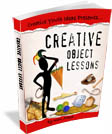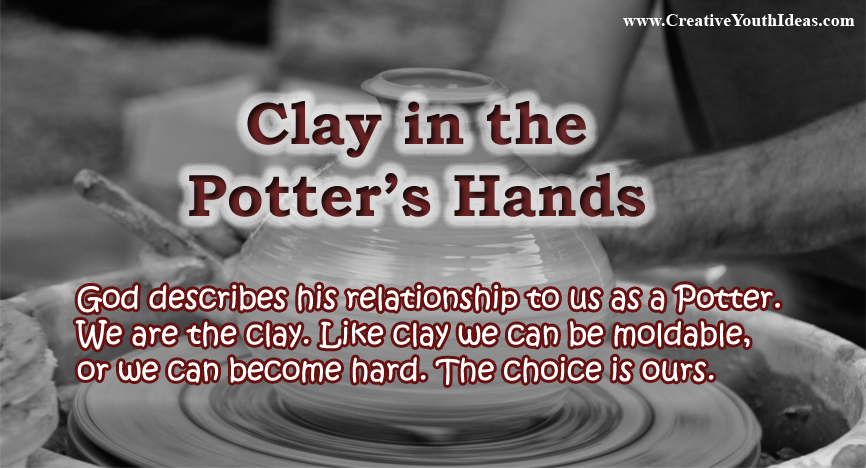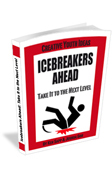A Lump of clay is chosen with a purpose in mind. The potter envisions a vessel that will be useful to its final owner and a credit to the potter’s craftsmanship and experience. The potter applies pressure to the clay in different ways shaping and forming it until the final product he imagined is realized. The Bible tells us Adam was made from clay. God describes his relationship to us as a Potter. We are the clay. Like clay we can be mouldable, or we can become hard. The choice is ours.
PLEASE SHARE “Clay in the Potter’s Hands” ON FACEBOOK
Games Using Clay or Playdoh
Note: Playdoh, while generally easy to remove can get mashed into carpets and leave bihind residue on some objects. You’ll want to make sure you use it in a way so that cleanup presents no problems.
- Best impressions – Give youth some playdoh and send them on a scavenger hunt to obtain impressions of various objects in the clay/ playdoh. You can put things on your list like 5 different size coins, comb, leaf, key, button, pen cap, bottle cap, can tab, fork, shell, dog-tag, chess piece, cross, earring, paper clip, tweesers, action figure, bug, small lightbulb, lego, marble, battery, chain, rope, pencil, pair of dice, monopoly piece, checkers, wrench, nail, screw, watch, belt buckle, thimble, safety pin, whistle, lifesaver, golf ball, a letter, word from an engraving, etc. Add your own.
- Clay Bowling – Have youth make balls from the clay / playdoh. See which one can get their ball to roll the farthest, or the straightest…. Or get closest to a target.
- Longest snake – Which team can roll our the longest snake given the same amount of clay.
- Great Minds Think Alike – Provide each of the youth with a tub of play dough. Have all the youth sit in a circle with their backs to each other. Call out a theme; example Animal, Shape, Candy, Letter, Pastry, etc. Give the players 1 minute to create something with that theme. When the time is up everyone turns around to face the center of the circle and shows what they have made. Points are determined by how many youth thought of the same thing to make. So, for example if the theme was ANIMAL and four teens made cats, two made fish, six made dogs, and one made a penguin then all the youth who made cats would get 4 pts, all who made fish would get 2 pts, all that made a dog get six points.
- Pass the Clay – Divide the youth into two or more teams, sit them in a circle, and then give one person on each team a large lump of clay/Playdoh. When you shout out an object, scene or word, the person holding the clay begins to shape it as fast as they can. After a few seconds blow a whistle or use some other loud noise to indicate a change and then the clay must be passed to the next person who picks up where the first person left off. Continue to change sculptors every few seconds. Shout a final “STOP” after which each team shows off their creation. You can award points for the most realistic, the funniest, etc. You can use Biblical objects, people, and ideas or everyday objects like a hotdog stand, a clown, a barn with animals, A plate of spagetti with meatballs, etc.
- Pass the Clay Mystery Object – This is played just like pass the clay, but the first person must start making something without communicating to the rest of the group in any way what the object is. You can assign an item to the first person or let them choose the item on their own. Once you yell the final stop, have the first person express what they started to create and then compare this to the final object. It can make for lots of laughs.
- Playdoh Pictionary – Divide the youth into 2 or more teams. Each team chooses one member to start the game as the sculptor. It’s played just like pictionary, but instead of drawing the word, the youth must shape it from the Playdoh/clay. The first team to correctly guess the word wins a point. After a word is shaped and guessed, the next person on the team becomes the sculptor. The team at the end of the game with the most points wins. The sculptors may only mould the clay to represent the word and cannot say anything, make noises, use actions and gestures or represent the word in any other way. They also are not allowed to shape any letters or numbers. The words can be people, animals, objects, concepts, Adjectives, etc. VARIATION: Instead of going through the whole bowl of words to win, you can set a timer. When the time is up, the team with the most words guessed, wins.
- Playdoh Pictionary Race – Played the same as playdoh pictionary, but this one is a race. Each team sends one “sculpter” up to get the first word. They then run back to the team and sculpt the word. As soon as their teammates correctly guess the word, a new person from their group who has not gone yet runs up to the person with the list and they are given the next word. The team who successfully gets through the whole list first, wins.
- PlayDoh Pong – Set up plastic cups at one end of the table in a row of five, a row of four, a row of three, a row of two, and then one to form a triangle of cups. In the bottom of each cup write a different point value – In some cups put 5, others put 10, and in others put 15. To play have each youth stand and the other side of the table. Provide them with a can of Playdoh and a plastic spoon. Give them two minutes to create as many Playdoh balls as they can and use the spoon to try and flick them into the cups. At the end of two minutes count up their points. Whoever has the most points at the end wins.
- PlayDoh Treasure Hunt – Mix about 50-100 coins and pennies into a large amount of Playdoh and roll the Playdoh into a thick, flat mass on a table. At your signal, they can use plastic spoons to dig into the playdoh and collect as many pennies as they can in a given amount of time. The person with the most value coins wins.
- Ring toss – Youth make coil hoops and do a ring toss over objects for various points.
- Tallest tower – Give each team a lump of playdoh. The team that builds the tallest standing tower in the given time wins. Add some dried spaghetti for a little more excitement. The tower must be standing with no help from the group members or any other devices.
TAKE IT TO THE NEXT LEVEL
MAKE IT SPIRITUAL
- What does it mean to sculpt, shape, or mould something into a particular shape?
- What are things that might be molded, sculpted, or formed?
- How does something that’s molded become changed from its original form?
- How did you decide what your creation was going to look like?
- Did you come up with a plan before you started or did you just start and make changes as you went? Was this a good or bad method? Why?
- What can this activity tell us about God working in our lives?
MAKE IT PRACTICAL
- Why do you think God wants to mold us?
- Why is it better for us to be like clay?
- What are some things in life that try to mould us and shape us?
- What are some typical molds that students at your school get squeezed into?
- Why do we give way to pressure to be shaped by things and people around us?
- Is conformity good or bad? Explain? What makes the difference?
- Why do we give in so easy to allow us things to force us to conform?
- Why is it difficult for us to allow God to mould us?
MAKE IT PERSONAL
- What are some of the things you are you being squeezed into?
- What things are shaping your life?
- How would you describe the work of the Divine Potter in your life?
- What can you do to be more yielding to God’s hand to shape your life?
SCRIPTURE VERSES
- Genesis 2:5-7 – “In the day that the LORD God made the earth and the heavens, when no plant of the field was yet in the earth and no herb of the field had yet sprung up—for the LORD God had not caused it to rain upon the earth, and there was no man to till the ground; but a mist went up from the earth and watered the whole face of the ground—then the LORD God formed man of dust from the ground, and breathed into his nostrils the breath of life; and man became a living being.”
- Job 10:9 – “Remember that thou hast made me of clay; and wilt thou turn me to dust again?”
- Jeremiah 18:3-6 – “Then I went down to the potter’s house, and there he was, making something at the wheel. And the vessel that he made of clay was marred in the hand of the potter; so he made it again into another vessel, as it seemed good to the potter to make. Then the word of the LORD came to me, saying: ‘O house of Israel, can I not do with you as this potter?’ says the LORD. ‘Look, as the clay is in the potter’s hand, so are you in My hand, O house of Israel!’ “
- Isaiah 45:9 – “Woe to those who quarrel with their Maker, those who are nothing but potsherds among the potsherds on the ground. Does the clay say to the potter,’What are you making?’ Does your work say,’The potter has no hands’?”
- Isaiah 64:8 “Yet you, Lord, are our Father. We are the clay, you are the potter; we are all the work of your hand.”
- Romans 9:21 – “Does not the potter have the right to make out of the same lump of clay some pottery for special purposes and some for common use?”
- Romans 12:1-2 – “Therefore, I urge you, brothers and sisters, in view of God’s mercy, to offer your bodies as a living sacrifice, holy and pleasing to God – this is your true and proper worship. Do not conform to the pattern of this world, but be transformed by the renewing of your mind. Then you will be able to test and approve what God’s will is – his good, pleasing and perfect will.”
- II Timothy 2:20-26 – “In a great house there are not only vessels of gold and silver but also of wood and earthenware, and some for noble use, some for ignoble. If any one purifies himself from what is ignoble [those practices which appear just before this in the context —wrongful attitudes, contentiousness, ungodliness, doctrinal aberrations, iniquity] then he will be a vessel for noble use, consecrated and useful to the master of the house, ready for any good work.”
PLEASE SHARE “Clay in the Potter’s Hands” ON FACEBOOK
HOME MADE PLAYDOH RECIPE
You can find various alternative recipes for this on the internet
1 cup cold water
Food coloring of your choice
1 cup white flour
1/2 cup table salt
2 tsp cream of tartar
2 tsp cooking oil
Scented oil or extract (optional, just for scent)
Combine the ingredients in a heavy saucepan and stir to mix and review the color. The color will deepen when the playdough is cooked. To get really good purples and colors like black I bought gel food coloring. Cook over medium heat, stirring constantly until the Playdoh pulls away from the sides of the pan. About 3 to 5 minutes, or until it has the consistency of mashed potatoes or well, Playdoh. Remove from the heat and allow it to cool for 1 minute before kneading the dough. Store, after cooling, in a plastic container or resealable plastic bags. If stored in an air tight container or bag it can be kept for months.
 MORE IDEAS? See “Creative Object Lessons”
MORE IDEAS? See “Creative Object Lessons”
200 page e-book that explains everything you need to know when planning your very own object lessons. It contains 90 fully developed object lesson ideas and another 200 object lesson starter ideas based on Biblical idioms and Names / Descriptions of God.
![]()


 Materials
Materials